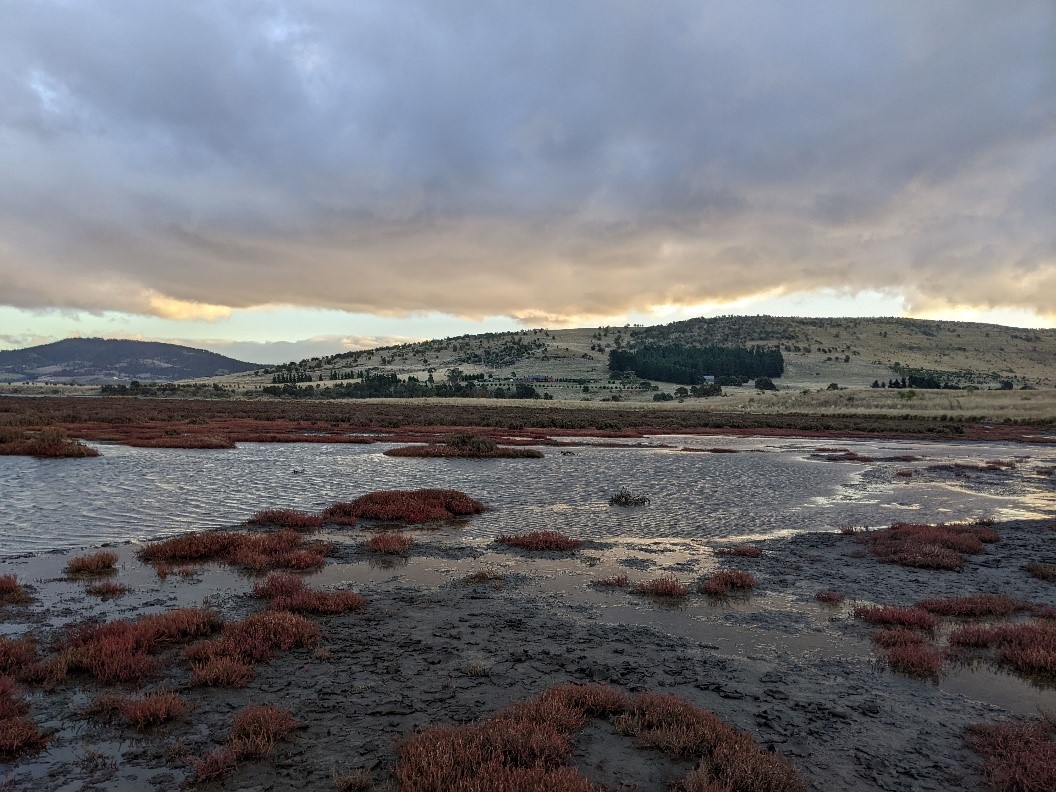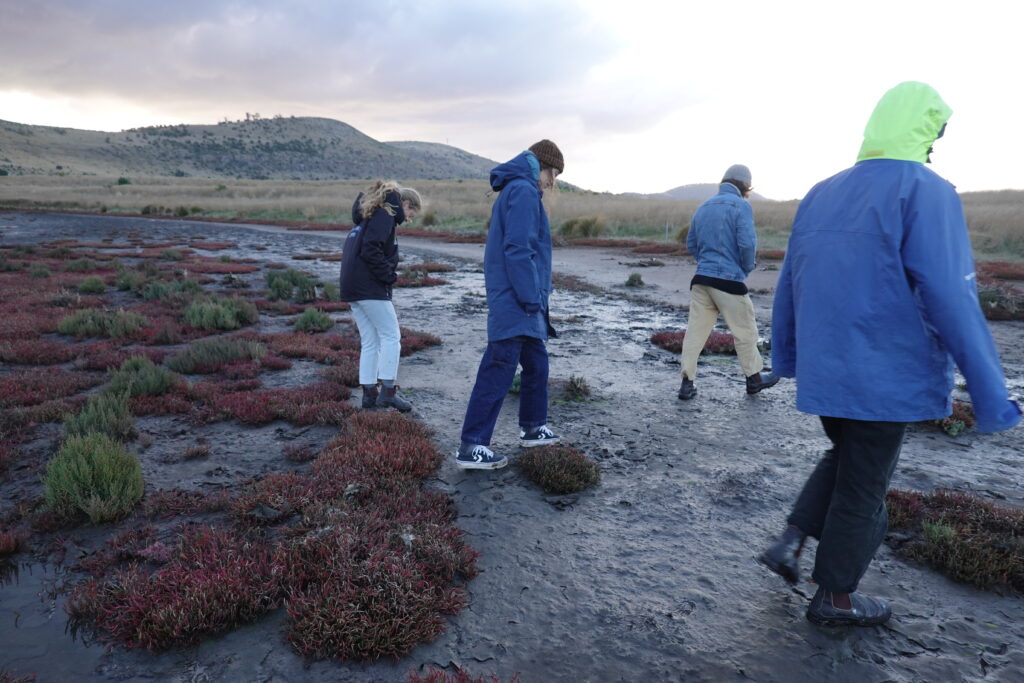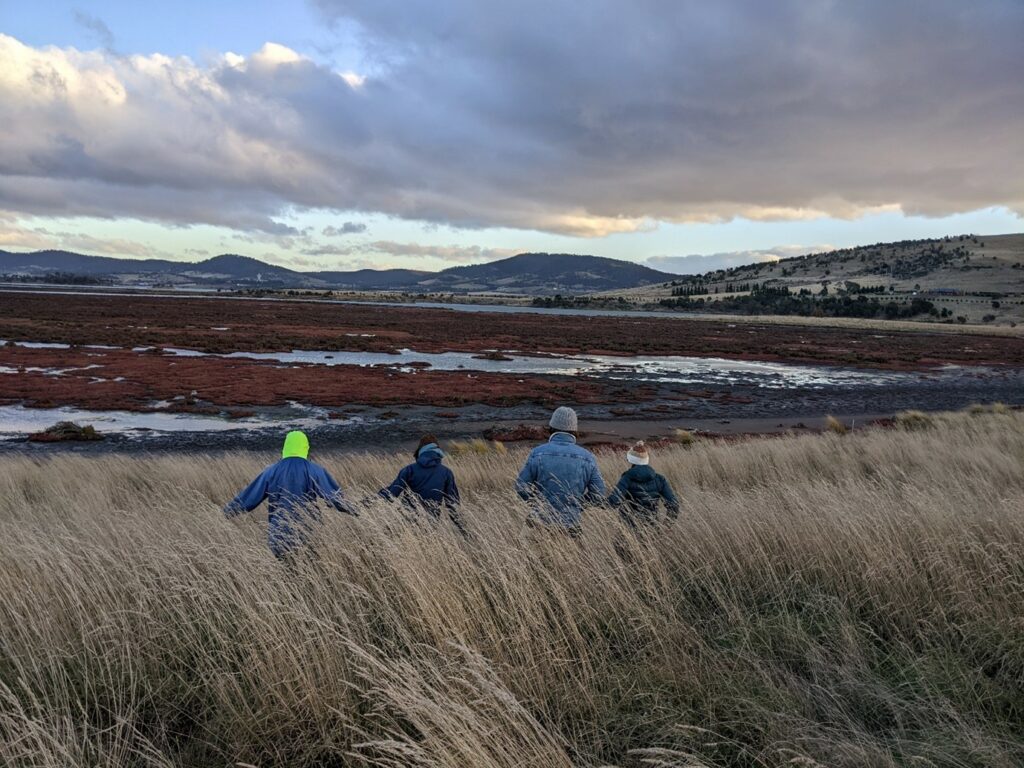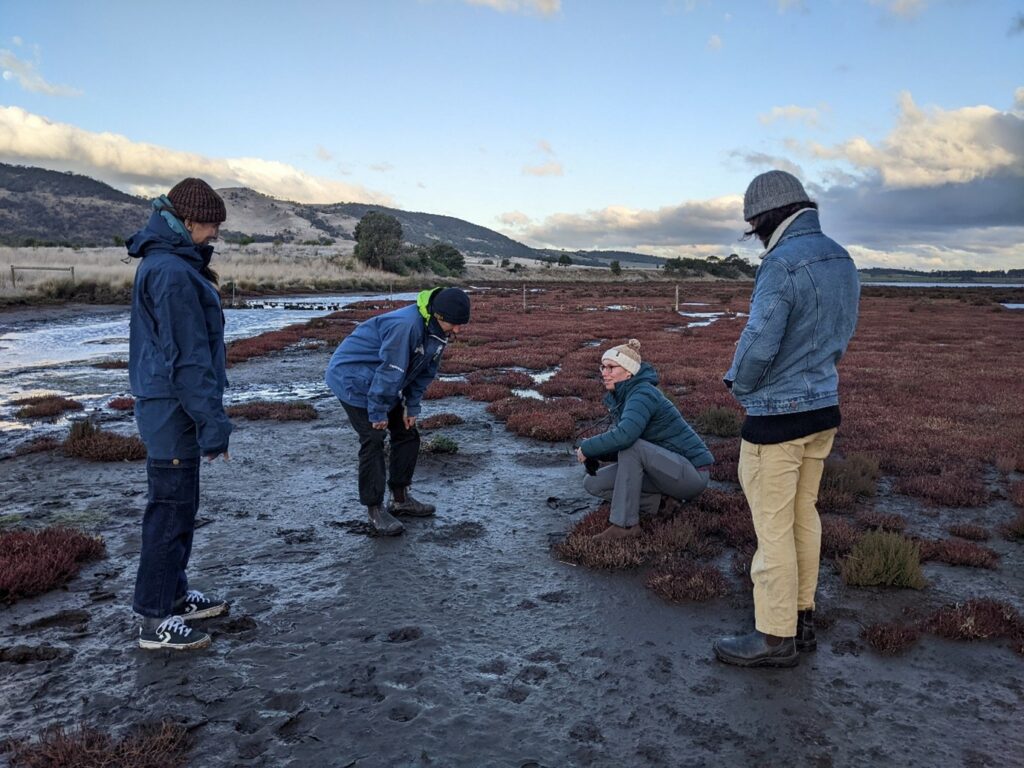Restoring a saltmarsh brings many benefits. Improved biodiversity and environmental values, healthier plant life, increased fish habitat and better resilience to climate change. Collectively, these benefits have a positive flow-on effect for the local community, from improving water quality to supporting local fisheries.
Over the last three years, NRM South has been working on a restoration project at Pitt Water-Orielton Lagoon, near Richmond, and engaging with the local recreational fishing community has been an important part of this project. Six field community field days and three workshop organised by NRM South and project partner OzFish have brought the local community along on this restoration journey, educating field day attendees about the importance of healthy saltmarsh and the connection between saltmarsh and fisheries.
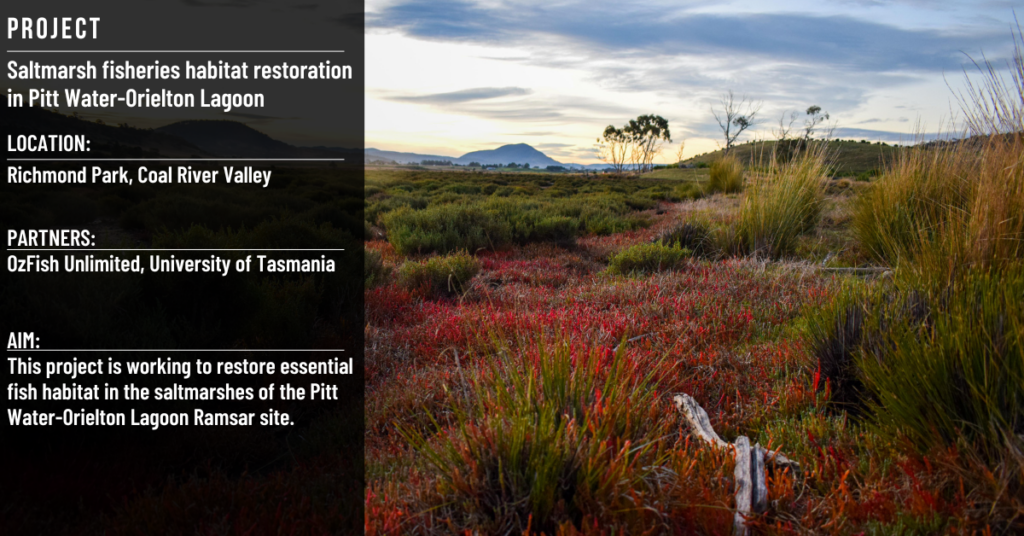
Grace Isdale, project lead with NRM South, has enjoyed taking the community out to this special site, which is otherwise inaccessible to the general public. ‘Recreational fishers are very invested in having access to a regular and abundant supply of healthy fish’, explained Grace, ‘And recreational fishers are important stewards of local fisheries. Fishing is an important activity for many Tasmanians and more than just a pastime. It provides social connections, a food resource and the innate health benefits that come with being outdoors by the sea.’
As the project draws to a close, a final community field day was held at Richmond Park Estate in early June where we showcased the outcomes of works completed to date and discussed what comes next. Participants were guided through the 65-hectare area of saltmarsh undergoing restoration. They learned about how the legacy of changing land use and land clearing in and around the saltmarsh has changed landscape function and how the impacts of livestock grazing, introduced species and changes to flow of water across the saltmarsh all impact the delicate balance of the saltmarsh ecosystem. They were also able to get a first-hand look at the striking difference between a healthy saltmarsh and one in need of restoration.
Recreationally valuable fish species such as mullet, Australian salmon, and greenback flounder have been negatively impacted by changes to the saltmarsh and Grace discussed some of the many project activities that have been completed over the last three years to address these impacts. This includes two kilometres of fencing installed to protect saltmarsh from the impacts of livestock, weed removal and revegetation across nearly six hectares. Participants also learned about the site’s important Aboriginal cultural values, and the importance of this project in preserving and enhancing these values.
Grace also provided insights into the various monitoring methods employed to assess populations of recreationally important fish species and their habitats before and after restoration activities. This has been done through monitoring the reach and depth of tides, vegetation surveys and fish sampling. This data will be used both to evaluate how effective the project has been, and identify future management actions.
Although this project is wrapping up, works will continue at the site as part of NRM South’s ongoing restoration efforts under a recently funded Blue Carbon project. This includes the removal of a bund that has been impacting on natural water flows since its construction many decades ago.
‘While we are expecting to see some short-term benefits arising from the work that has been done so far, restoring a landscape is a long-term process and we expect improvements to continue and become more obvious in the years to come,’ said Grace. ‘We have had really good feedback from the community, particularly the recreational fishing community, about what’s been happening at the site and the chance to see this often overlooked habitat in a new light.’
This project is supported by NRM South through funding from the Australian Government’s Fisheries Habitat Restoration Program. It is delivered in partnership with University of Tasmania, OzFish Unlimited, and the property owner of Richmond Park Estate.
